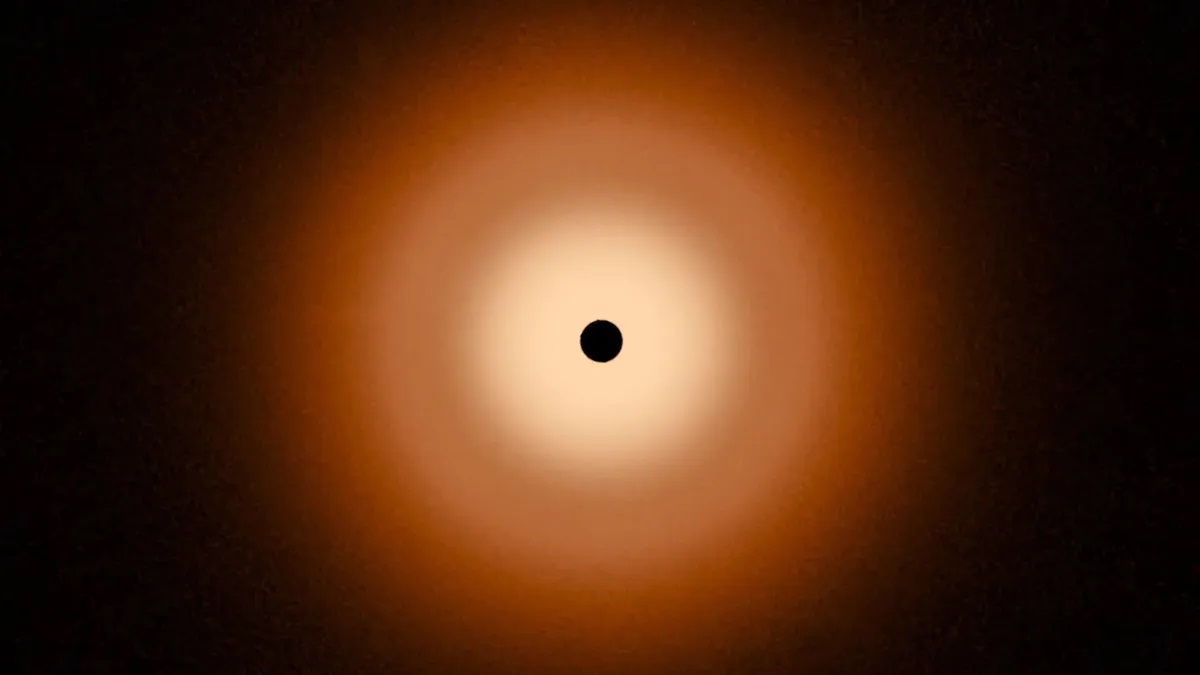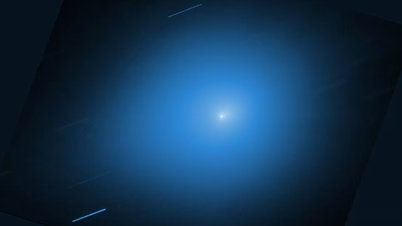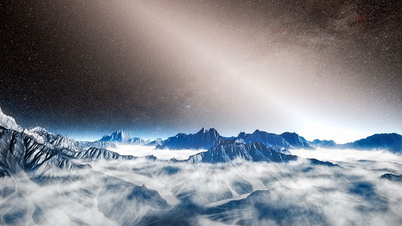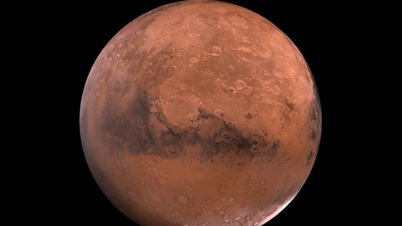(NLĐO) - Located just 25 light-years from Earth, something is surrounding the star Vega, which could overturn our understanding of how extraterrestrial worlds form.
The James Webb Space Telescope has captured an unusually fine disk of cosmic debris around Vega, a super-bright blue star, the brightest in the constellation Lyra.
It's a huge protoplanetary disk, similar to the protoplanetary disk of the early solar system, where Earth and other planets were born.
However, Vega's protoplanetary disk possesses characteristics that scientists describe as "unexplainable".

Surrounding the star Vega is an impossibly smooth protoplanetary disk - Graphic: UNIVERSITY OF ARIZONA
A research team from the Steward Observatory - Lunar and Planetary Science Institute of the University of Arizona, the Space Science Institute, NASA's Jet Propulsion Laboratory (USA), and Trinity College Dublin (Ireland) studied the strange structure.
Protoplanetary disks should ideally have voids, which are where gas and dust coalesce to form planets.
But according to Dr. Andras Gáspár from the University of Arizona, the disc of Vega is strangely smooth, which suggests that no planets exist around it.
There is a faint, small band of light located about 60 astronomical units (AU, 1 AU is equal to the distance between the Sun and Earth) from the star.
However, upon closer examination, this was merely the result of some dust being blown further away by radiation, not the work of a developing planet.
Although Weaver Girl is much younger than the Sun—it's only about 455 million years old—it was old enough to give birth to a planet. For example, our Earth is estimated to be less than 10 million years younger than the Sun.
If we compare Chức Nữ to Fomalhaut, a slightly younger star, the absurdity of the smooth disc becomes even more apparent.
Fomalhaut is a perfect analog of Vega, also a super-bright blue-white star, with a large gap in its protoplanetary disk suggesting a giant planet or several smaller planets have been born.
Researchers are unable to explain why Vega cannot produce exoplanets while Fomalhaut seems to be able to, even though similar physical mechanisms are thought to coexist in both star systems.
Researchers have put forward many scenarios, but none explain why the star Vega cannot give birth to planets.
Researchers also wondered whether more such ultrafine, non-exoplanetary disks could be found in the universe.
If they were common, calculations regarding the number of planets that could exist in a galaxy or in the universe could be profoundly altered.
"This forces us to rethink the scope and diversity among exoplanet systems," concludes Dr. Kate Su from the University of Arizona.
Source: https://nld.com.vn/cau-truc-hinh-dia-khong-giai-thich-duoc-hien-ra-tu-sao-chuc-nu-19624110811243433.htm



































![[Photo] Prime Minister Pham Minh Chinh holds a phone call with the CEO of Russia's Rosatom Corporation.](/_next/image?url=https%3A%2F%2Fvphoto.vietnam.vn%2Fthumb%2F1200x675%2Fvietnam%2Fresource%2FIMAGE%2F2025%2F12%2F11%2F1765464552365_dsc-5295-jpg.webp&w=3840&q=75)









































































Comment (0)